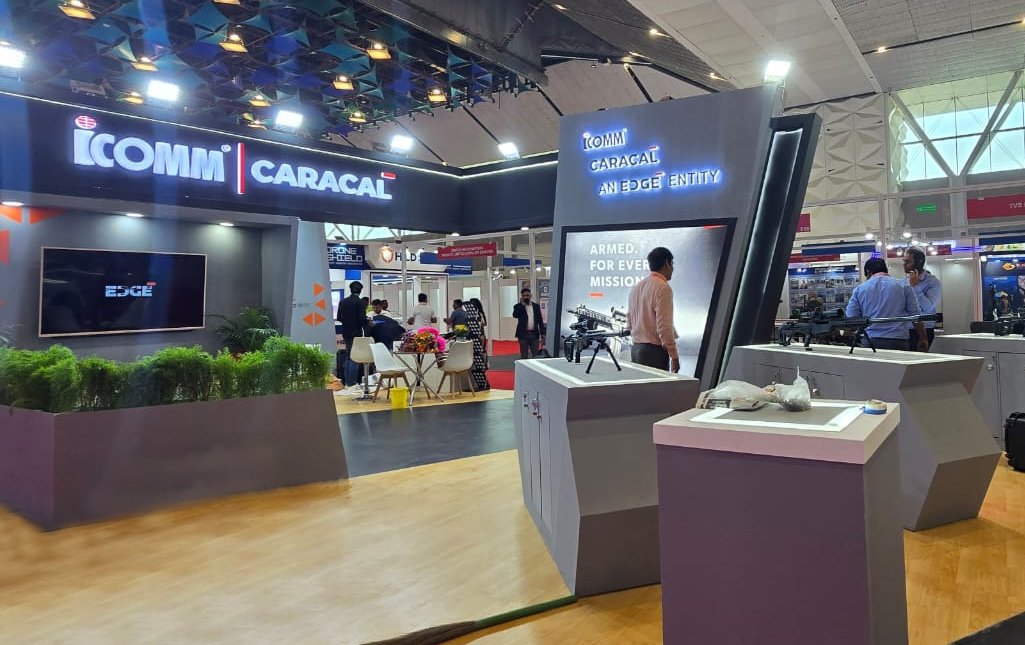Milipol India 2025 commenced with a solemn one-minute standing condolence, honouring the families of victims affected by the recent terrorist attack in Pahalgam, Kashmir.
In his keynote address at the inaugural ceremony of the exhibition, Nityanand Rai, Minister of State (MoS) for Home Affairs, emphasised the growing importance of Indo-French cooperation in the security sector, particularly in the co-production of advanced technologies. “Together, we can enhance the capabilities of our security forces, invest in co-production with advanced technologies, and create an environment where both nations’ startups, MSMEs, and industries can collaborate, innovate, and succeed,” Rai stated.
François-Noël Buffet, representing the French Ministry of Interior, highlighted the deepening Indo-French defence and security collaboration and stressed the importance of expanding this partnership further, including into emerging areas such as Artificial Intelligence (AI).
India further reaffirmed its zero-tolerance stance against terrorism and deepened strategic cooperation with France in homeland security, as top leaders from both nations convened at the Milipol India 2025.

CARACAL UAE’s CEO Hamad Salem Al Ameri while interacting with the Editor, Raksha Anirveda – a defence and strategic affairs quarterly at the conference said that at Milipol India 2025, CARACAL in partnership with ICOMM is showcasing the results of three years of its dedicated efforts to bring the company’s small arms portfolio to India. This marks one of the first defence technology transfers from the UAE to India. CARACAL is displaying its full range of products, i.e. pistols, submachine guns, assault rifles and sniper rifles—all now made in India.
Milipol India 2025 brings together numerous international exhibitors from countries including India, France, the Netherlands, the UAE, the US, etc. The participants showcased various cutting-edge technologies in surveillance, AI-driven security systems, cybersecurity, crisis management, and more, setting the tone for the future of global security
CARACAL from UAE showcased some of the finest weapons, with their flagship model, the CSR 50 anti-material sniper rifle, taking centre stage — an asset that could significantly enhance Indian Army, CRPF and State police operations.
With an effective range of 2 km and beyond, it offers long-range precision essential for border security, counter-terrorism missions, and high-threat engagements. Maintaining its distinction as the lightest in its category, weighing just 10 kg without accessories, the rifle ensures greater mobility and operational efficiency for soldiers in rugged terrains.
This year, the rifle has seen impressive advancements, including advanced ergonomics and reduced recoil, enhancing stability for Indian sharpshooters during prolonged operations. Additionally, it features a high-capacity magazine of 10 rounds and a fully adjustable buttstock, making it adaptable for diverse combat scenarios, from mountain warfare to urban engagements. Its cutting-edge design and capabilities position it as a force multiplier for India’s defence forces, reinforcing strategic superiority in modern warfare.
Marking its second phase of journey in India, CARACAL displayed its Light Ammunitions range at Milipol. It included a range of calibres—9mm, 5.56, 7.62×51, and 12.7.
“Manufacturing ammunition in India, and creating a complete weapons-and-ammo ecosystem is CARACAL’s ultimate goal. And to realise it, it is open to partnerships in this area and plan to replicate our success in small arms manufacturing with ammunition production,” CARACAL CEO Al Ameri added.
CARACAL, UAE displayed its Light Ammunition range at Milipol 2025. It includes a range of calibres—9mm, 5.56, 7.62×51, and 12.7. Manufacturing ammunition in India, and creating a complete weapons-and-ammo ecosystem is CARACAL’s ultimate goal
Hamad Al Ameri further said that for CARACAL, the next big milestone will be the establishment of light ammunition manufacturing in India. The company is also exploring setting-up an advanced R&D and expanding its product portfolio to suit Indian defence and homeland security needs.
The conference served as a platform to address evolving security challenges, including cyber threats and AI-driven disruptions. Sanjeev Kumar Jindal, Additional Secretary, Ministry of Home Affairs, said India’s internal security landscape demands advanced technology integration for effective response. “Equipping our forces with state-of-the-art tools is now a basic priority,” he noted.

Industry leaders, including M.K. Gupta from Star Wire India, and organisers from PHDCCI, highlighted the need for technology transfer, indigenous innovation, and stronger public-private partnerships to bolster India’s security framework. Gupta called for industry-wide collaboration, saying, “From MSMEs to global OEMs, today’s event is a call to co-create and co-secure the future of our homeland.”
Innovative Products Displayed
Advanced technologies to stop spying through hidden mobile devices, counter drone attacks, and enhance surveillance are set to strengthen India’s national security. They offer new tools to protect sensitive areas, borders, and public safety, as showcased at the exhibition. The exhibition also served as a platform for displaying latest technological advances in homeland security apparatus, in conjunction with advances in the field of AI and surveillance.
One such innovation was Rover Mark-1, developed by “Security Defence System”, and completely “Made in India”, is a cutting-edge innovation. Designed for handling suspicious objects, with its load capacity of 10 kg and equipped with four cameras, it offers precise control — up to 200 meters out of sight and 01 km within the line of sight and weighs 84 kg.
This advanced device is currently in use by the CISF, J&K Police, Maharashtra Police and Punjab Police, along with security operations handled by CISF at four airports.

FPV (first person view) drones developed by, Optiemus Unmanned Systems Private Limited were also at display. These drones can be operated using Optical Fiber Cable. This capability allows navigation which cannot be blocked by electronic warfare capabilities.
These drones will have range of up to 20 kms in one direction and are ideal for kamikaze and surveillance operations. The FPV drones offer different capabilities in terms of payload capacity and endurance. One of the models can carry 1 kg payload with 15+ mins endurance while the other can carry 350 grams payload with 30+ mins of endurance.
FPV (first person view) drones developed by, Optiemus Unmanned Systems Private Limited were also at display. These drones can be operated using Optical Fiber Cable. This capability allows navigation which cannot be blocked by electronic warfare capabilities
Two other innovative systems, Secure Meeting Guard and Secure Ops Room Guard, were also on display, these instruments could block all radio frequency signals—used by mobile devices to send or receive information—in a specific area, creating zones where no mobile device can work. Their ability to completely neutralise signals makes them vital for high-security environments where even one active device could leak sensitive information.
Technologies to tackle drone attacks were also on display, as drones shift from long-range surveillance to short-range strikes on borders, key infrastructure, and VVIP security. These include Drone Detection Systems to spot drones in the air, Networked Directional Drone Detectors and Jammers to block their signals, portable Backpack and Hand-Held Drone Detectors and Jammers for mobile use, Handheld Drone Guns in various designs to disable drones, and Wearable Drone Detection and Jamming Systems that soldiers can wear.
Using artificial intelligence and machine learning—methods that help computers learn and make decisions—these systems allow ground forces to stay alert and respond quickly to threats, offering a comprehensive approach to detect and stop drones, which are increasingly used for attacks or smuggling, experts noted.
Other solutions focussed on improving security in tough conditions for various security agencies, including the Defence sector. Foliage-Penetrating Human Detection Systems can find people hiding in dense vegetation, useful for border patrols.
Border and Perimeter Intrusion Detection Systems help stop unauthorised entries, while Cross-Border Mobile Intelligence Gathering Solutions collect information from across borders. Search and Rescue Human Locator and Secure Emergency Communication Systems assist in finding people and communicating safely during emergencies, offering practical tools for defence and rescue operations. These locally developed solutions provide agile, cost-effective responses to dynamic security threats, according to technology analysts.
Adani Defence & Aerospace showcased its DRISHTI Counter-Drone System, which detects and neutralises unauthorised drones using radar and jamming technology, protecting critical sites like airports or military bases
The wide ranging products showcased by VEDA Defense Systems at Milipol India 2025 impressed. The star attraction were two flagship solutions – PILAR and PEARL for an advanced situational awareness and greater force protection respectively. VEDA Defense Systems has partnered with Metravib Defence for the localisation of these two systems. Also on display were VEDA’s kamikaze drone, fire control systems and jet powered Sureshastra Mk-1 swarm drones.
Shyam VNL, the developer behind the anti-spying and anti-drone systems, specialises in security and communication solutions, managing everything from design to maintenance. The company uses its own R&D to create customised, future-ready tools for defence and security forces, contributing to India’s security landscape.

The exhibition also showcased advanced security tools from other exhibitors. IDEMIA India presented its MORPHO Biometric Identification System, which uses fingerprint and facial recognition to identify individuals, helping security forces verify identities at checkpoints or borders with high accuracy.
MKU Limited displayed its Night Vision Monocular, a lightweight device that allows personnel to see in complete darkness using infrared technology, enhancing visibility during night operations like border patrols.
The event also featured state-level conferences and expert panels, where regional security issues, strategic coordination, and innovation-led solutions were actively discussed. These sessions provide a vital platform for high-level interaction among industry leaders, defence experts, and policy decision-makers.





